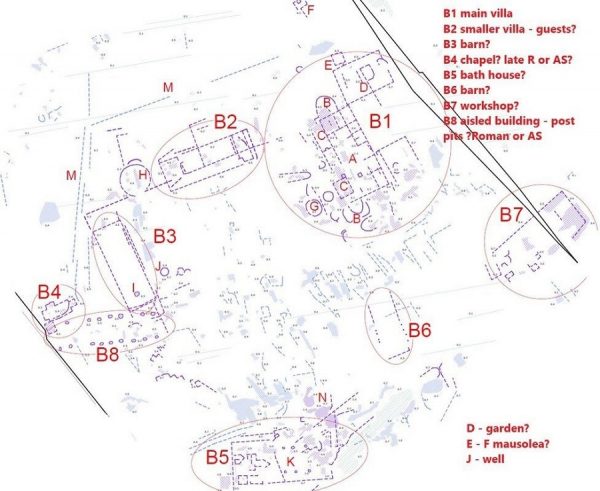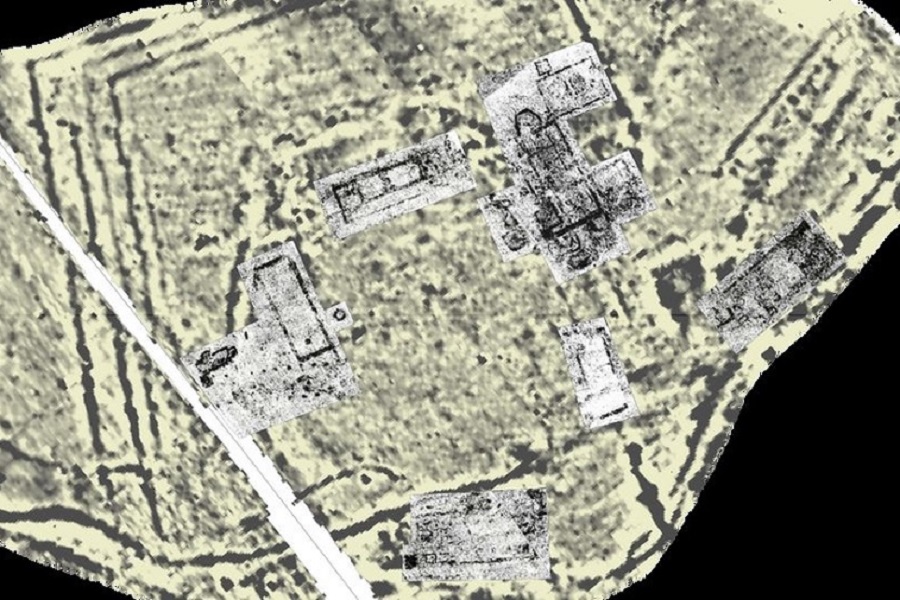We learned last year about the Rutland Roman Villa. Geophysical surveys now reveal the full scale and complexity of the site near Luffenham.
Discovered in 2020, excavated by Leicester University, and made public last November, the primary focus to date has been on a stunning mosaic which features scenes from the Trojan War.
Ground-penetrating radar and magnetometry reveals a 5 hectare site surrounded by ditches.
Dr John Gater, of SUMO Geophysics Ltd, says:
“This is the largest site we have worked on and on a par with the largest villas in the Cotswolds.”
The surveys reveal a large number of villa buildings, along with a probable bath house and perhaps even mausolea and a chapel. A separate aisled building might be Anglo-Saxon, perhaps showing re-use after the Romans. The perimeter ditches could date from the Iron Age, with the villa occupying an already defended area, or they could be contemporary with the 3rd/4th century villa.
Further excavation at the site is being planned for summer 2022.

Magnetometry revealed a series of box-like ditches, while radar detailed the buildings inside. The survey team has put forward ideas on what the buildings may be, based on size and shape. Image Credit – Sumo Geophysics
More detailed information about the site is available in the following You Tube lecture by Jennifer Browning from University of Leicester Archaeological Services:



